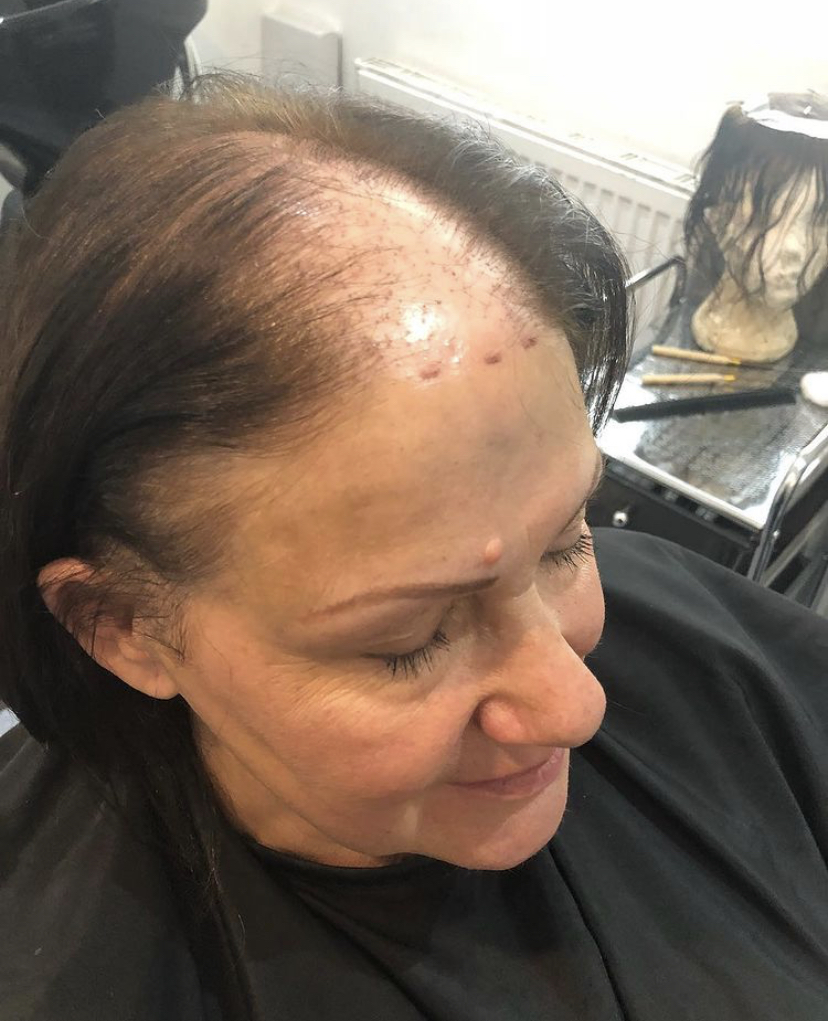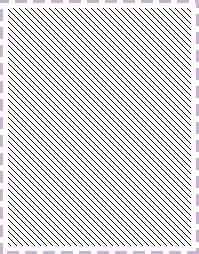The Secret Salon has moved to By Danielle Alexandra for all Hair Loss courses. Check out the new site today!
A GUIDE TO HAIR LOSS AND ITS CAUSES
The average person loses 100 hairs a day, mostly during washing or brushing. This may sound like a lot but is entirely normal as you’re constantly replenishing your hair with new growth. But what if you’re losing more than average?
Hair loss may be common in men of a certain age but can impact women and children too in some cases. Far from being just a physical symptom, losing your hair can dramatically affect your self-esteem and mental health, which in turn can disrupt your hair growth cycle further.
Our Secret Salon Academy guide will take you through the various reasons that hair loss can occur, and what you can do to support hair growth and enhance your appearance.
- Alopecia
Traction alopecia
Trichotillomania
Cancer treatments such as chemotherapy
Male and Female Pattern baldness
Post-partum hair loss
Birth control
Thyroid issues
Menopause
Covid-19


Alopecia and Alopecia areata
Alopecia can be the cause of hair loss which occurs on any area of the body. There are several different types of alopecia, some of which are temporary, meaning that your hair will regrow in time. Others are associated with permanent hair loss.
Alopecia areata is the most common form of the condition and affects around 0.15% of the UK population at any one time, with 2% experiencing symptoms at some point in their life, striking at any time.
Alopecia areata is characterised as being spot baldness, affecting just small patches of hair which can be coin shaped in size. As a well-known autoimmune condition, it occurs when the body’s immune system attacks the hair follicles and prevents hair from growing. If you are diagnosed with alopecia areata, then it is common for the hair loss to be a temporary flare-up followed by a period of regrowth. This stop-start cycle can continue over many years, but in some cases will develop into permanent hair loss.
Unfortunately, there is no known cure for alopecia areata, although there are many support resources available including the charity, Alopecia UK.
Alopecia totalis is more extensive than alopecia areata and refers to the loss of all the hair on the scalp. Much like alopecia areata, this is an autoimmune condition that is created when the immune system mistakenly believes its being attacked by a virus and therefore targets its own cells as a result.
Alopecia universalis is where hair on other parts of the body is lost, as well as the scalp. This can affect the eyelashes, eyebrows, and all other body hair too.
If you notice any bald patches on the scalp or feel that you’re shedding more hair than is normal for you, then get in touch with your GP to discuss your symptoms in more detail. Where possible, try to refer to old photos for comparison and see if you have previously had more volume.
Traction Alopecia
This condition is caused by hairstyles which pull the hair up or back so tightly that the follicles are removed from the scalp. It is unlikely that traction alopecia would develop quickly and is more likely if you choose to wear a high ponytail or similar style over a prolonged period. In cases of traction alopecia, you’ll find that hair loss is more pronounced in areas of the scalp where the most tension is created. This might be along the hairline, the crown or behind the ears.
If you notice that you’re losing hair due to traction alopecia, the first step you can take is to adopt a looser hairstyle and be careful not to overbrush. This will allow your hair to grow back naturally in time since you won’t be tugging at the roots. You can also wear hair toppers and hair extensions to wear over any patches that are balding.
Unfortunately, if you continue to wear your hair in any style where there is tension, then you risk permanent hair loss as the follicles will not develop.
Trichotillomania or hair-pulling disorder
Trichotillomania is a mental health condition which can be described as a hair-pulling disorder. There are 20,000 sufferers in the UK, and the main symptom is a compulsion to pull their own hair out from the root. Typically, the hair on the head is the main target, but it’s not unknown for hair on the eyebrows, lashes, or beard to be removed too, as well as other body areas.
Trich is thought to be both an obsessive compulsive and a body-focused repetitive disorder. People at any stage in life can be affected, but the condition is more common in young people, with girls more impacted than boys, according to the NHS.
Mental health symptoms including stress, anger or anxiety can be a catalyst for trich, and sufferers sometimes feel a sense of relief after pulling their hair out as it allows them to release pent-up tension. Some people with trichotillomania are aware of their actions whereas others act unconsciously when they’re experiencing stress. For those who are aware of both their actions and the result of thinning hair, they can develop a lack of confidence and low self-esteem due to the change in their appearance.
If you wish to discuss treatment options with your GP, you will often be offered a talking therapy called CBT, or cognitive behavioural therapy. The goal of this is to modify your thought patterns and internal response to stress or other strong emotions and face them with positivity. As part of your therapy, you might be asked to keep a diary, making notes of when you pull your hair to make you aware of your triggers and therefore learn how to avoid them. This information can be used to develop a coping strategy for trich, for example substituting hair pulling for another type of stress release such as using a fidget aid. Putting plasters on your fingers or using breathing techniques can also help.
If the change in your physical appearance is causing you stress, then this can exacerbate the trichotillomania. You can use hair toppers, extensions or real hair wigs to cover your thinning hair. Attending hair extensions training courses will provide you with more information on these options. It’s also important to develop a strong support network around you – make sure you discuss your condition with family and friends, your GP or reach out to the Trichotillomania charity to access their resources.
Cancer treatments and Hair Loss
One person is diagnosed with cancer every two minutes in the UK, which equals approximately 360,000 new cases each year. Thankfully, approximately 50% of people will survive cancer for at least 10 years after their diagnosis thanks to a range of treatments available including surgery, chemotherapy, and radiotherapy. However, these treatments can be challenging and overwhelming with many physical side effects including changes to a person’s appearance.
Hair loss is one of the most recognisable effects of chemotherapy and this can include the hair on your scalp as well as eyebrows, lashes, armpit, pubic and other body hair. Chemotherapy drugs are designed to kill any cells that are growing rapidly to combat the spread of cancer; however, they will also attack hair follicles. Patients do respond differently to treatments, and some chemotherapy medications are gentler meaning that hair loss won’t necessarily occur. Possible outcomes include complete hair loss, mild thinning or in some cases patients won’t notice any difference at all.
On a positive note, hair loss caused by chemotherapy is only temporary; following treatment, you can expect your hair to grow back within three to ten months although it may have altered in texture or colour, for example, your post-treatment hair may be curly, straight, or even grey.
Radiotherapy is a targeted treatment and therefore you will usually only experience hair loss in the part of the body that the radiation beam hits. You can expect your hair to regrow six months after treatment has ended, but as with chemotherapy there’s a chance that your locks may have altered in appearance. In some cases, there is a slight risk that your hair will not return at all.
Pattern Baldness and male Pattern Baldness
Post-partum hair loss after giving birth
If your hair is falling out after having a baby, don’t despair as this is usually quite normal. As many as 90% of new mums experience postpartum alopecia in the months following birth. It is normal to shed a large volume of hair due to the radical changes in hormone levels and you may even notice bald patches too.
During pregnancy, your body will produce high levels of estrogen and progesterone, resulting in your hair going through a process of continuous growth. In a non-pregnant hair cycle, your hair would usually fall out and replenish simultaneously, but pregnancy hair just keeps growing. This comes to a sudden end once you have given birth, and you can expect to lose up to 400 hairs per day, in comparison to a non-pregnant person’s 100 strands a day.
In many cases, the shedding stage of postpartum hair loss will complete after about six months. However, if you notice that your hair is still thinning after this stage, then it’s a good idea to arrange a consultation with your GP. They may arrange bloodwork for a thyroid function test or check the levels of ferritin in your blood which is connected to how your body stores iron.
In terms of treatment, medication can help to provide more balance to your hormones which can halt excess hair loss in its tracks. In the meantime, make sure that you’re getting enough essential nutrients to keep your reserves stocked, especially if you’re not sleeping well and are breastfeeding. It may be easier said than done with a little one in tow, but it’s also critical that you take steps to relieve stress, otherwise your body may feel depleted. Accept offers of help, try to eat healthily and take naps where you can, to conserve your energy.
Birth control and hair loss
Thyroid problems and hair loss
Menopause and hair loss
Covid-19 and hair loss
How to Cope with Hair Loss
Whether you’re male, female, old or young, hair loss can be distressing for anyone. As it is so closely linked to our self-identity, any changes to our appearance can feel unwelcome and out of our control.
If you believe that you’re experiencing hair loss, for any reason, it’s important to get in touch with your GP or other health professional to discuss what could be wrong.
It might be that there’s a simple imbalance in your body that is easily identified with a blood test and can be corrected with medication. In other cases, it may be that you need to adopt a trial-and-error approach to see if your hair thinning improves over time. Permanent hair loss can occur too, which can be emotionally challenging; however, there are a wealth of resources available to support you. Your GP will be able to suggest a range of charities, forums, or support groups where you can learn more about your hair loss and speak to people with shared experiences.
It’s critical that you involve your family and friends as much as possible, so that they’re able to encourage you socially. Remember that if you don’t feel comfortable embracing your changed appearance, then there are many ways that you can cover any bald or thinning spots on your head. Hair toppers are useful if you only need to hide a small area of your scalp, whilst hair extensions will allow you to add more volume and length to your look. Wigs offer a full replacement to provide you with the locks and confidence you need.
Contact The Secret Salon
Are you struggling with thinning hair? The Secret Salon offers hair loss experts who are trained to analyse your scalp and deliver a treatment to suit your specific appearance and lifestyle requirements. Your consultation is free of charge and with no obligation. Learn more about our hair replacement treatments by giving us a call on 0161 707 9390 or email us at thesecretsalonacademy@outlook.com

WE WANT TO MAKE YOU FEEL GOOD.
The Secret Salon | 37 Regent Street | Eccles, M30 0BP | Call Us :- 0161 707 9390
